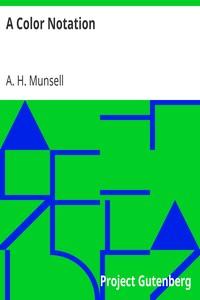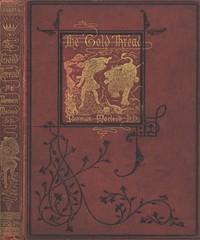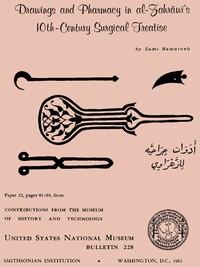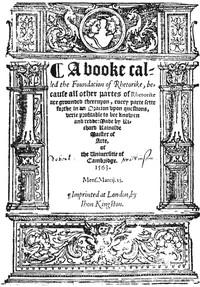|
|
Read this ebook for free! No credit card needed, absolutely nothing to pay.Words: 34164 in 14 pages
This is an ebook sharing website. You can read the uploaded ebooks for free here. No credit cards needed, nothing to pay. If you want to own a digital copy of the ebook, or want to read offline with your favorite ebook-reader, then you can choose to buy and download the ebook.

: A Color Notation A measured color system based on the three qualities Hue Value and Chroma by Munsell A H Albert Henry - Color@FreeBooksWed 07 Jun, 2023 A COLOR SYSTEM AND COURSE OF STUDY BASED ON THE COLOR SOLID AND ITS CHARTS. Arranged for nine years of school life. INDEX . COLOR NAMES. Writing from Samoa to Sidney Colvin in London, Stevenson says: "Perhaps in the same way it might amuse you to send us any pattern of wall paper that might strike you as cheap, pretty, and suitable for a room in a hot and extremely bright climate. It should be borne in mind that our climate can be extremely dark, too. Our sitting-room is to be in varnished wood. The room I have particularly in mind is a sort of bed and sitting room, pretty large, lit on three sides, and the colour in favour of its proprietor at present is a topazy yellow. But then with what colour to relieve it? For a little work-room of my own at the back I should rather like to see some patterns of unglossy--well, I'll be hanged if I can describe this red. It's not Turkish, and it's not Roman, and it's not Indian; but it seems to partake of the last two, and yet it can't be either of them, because it ought to be able to go with vermilion. Ah, what a tangled web we weave! Anyway, with what brains you have left choose me and send me some--many--patterns of the exact shade." Where could be found a more delightful cry for some rational way to describe color? He wants "a topazy yellow" and a red that is not Turkish nor Roman nor Indian, but that "seems to partake of the last two, and yet it can't be either of them." As a cap to the climax comes his demand for "patterns of the exact shade." Thus one of the clearest and most forceful writers of English finds himself unable to describe the color he wants. And why? Simply because popular language does not clearly state a single one of the three qualities united in every color, and which must be known before one may even hope to convey his color conceptions to another. The incongruous and bizarre nature of our present color names must appear to any thoughtful person. Baby blue, peacock blue, Nile green, apple green, lemon yellow, straw yellow, rose pink, heliotrope, royal purple, Magenta, Solferino, plum, and automobile are popular terms, conveying different ideas to different persons and utterly failing to define colors. The terms used for a single hue, such as pea green, sea green, olive green, grass green, sage green, evergreen, invisible green, are not to be trusted in ordering a piece of cloth. They invite mistakes and disappointment. Not only are they inaccurate: they are inappropriate. Can we imagine musical tones called lark, canary, cockatoo, crow, cat, dog, or mouse, because they bear some distant resemblance to the cries of those animals? See paragraph 131. +Color needs a system.+ Music is equipped with a system by which it defines each sound in terms of its pitch, intensify, and duration, without dragging in loose allusions to the endlessly varying sounds of nature. So should color be supplied with an appropriate system, based on the hue, value, and chroma of our sensations, and not attempting to describe them by the indefinite and varying colors of natural objects. The system now to be considered portrays the three dimensions of color, and measures each by an appropriate scale. It does not rest upon the whim of an individual, but upon physical measurements made possible by special color apparatus. The results may be tested by any one who comes to the problem with "a clear mind, a good eye, and a fair supply of patience." +Clear mental images make clear speech. Vague thoughts find vague utterance.+ The child gathers flowers, hoards colored beads, chases butterflies, and begs for the gaudiest painted toys. At first his strong color sensations are sufficiently described by the simple terms of red, yellow, green, blue, and purple. But he soon sees that some are light, while others are dark, and later comes to perceive that each hue has many grayer degrees. Now, if he wants to describe a particular red,--such as that of his faded cap,--he is not content to merely call it red, since he is aware of other red objects which are very unlike it. So he gropes for means to define this particular red; and, having no standard of comparison,--no scale by which to estimate,--he hesitatingly says it is a "sort of dull red." Thus early is he cramped by the poverty of color language. He has never been given an appropriate word for this color quality, and has to borrow one signifying the opposite of sharp, which belongs to edge tools rather than to colors. +Most color terms are borrowed from other senses.+ Free books android app tbrJar TBR JAR Read Free books online gutenberg More posts by @FreeBooks
: The Gold Thread: A Story for the Young by Macleod Norman - Conduct of life Juvenile fiction; Children's stories@FreeBooksWed 07 Jun, 2023

: Drawings and Pharmacy in Al-Zahrawi's 10th-Century Surgical Treatise by Hamarneh Sami Khalaf - Pharmacy Early works to 1800@FreeBooksWed 07 Jun, 2023

: Naomi eli Jerusalemin viimeiset päivät by Webb J B Mrs Annie - Historical fiction; Sieges Fiction; Jerusalem History Siege 70 A.D. Fiction@FreeBooksWed 07 Jun, 2023
|
Terms of Use Stock Market News! © gutenberg.org.in2025 All Rights reserved.






